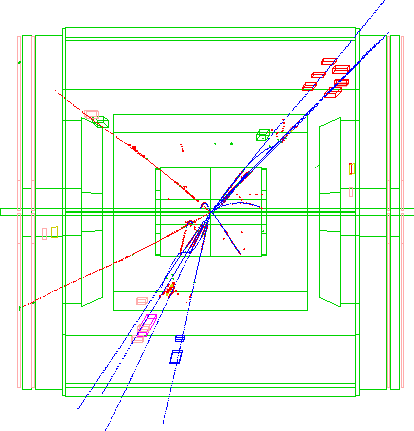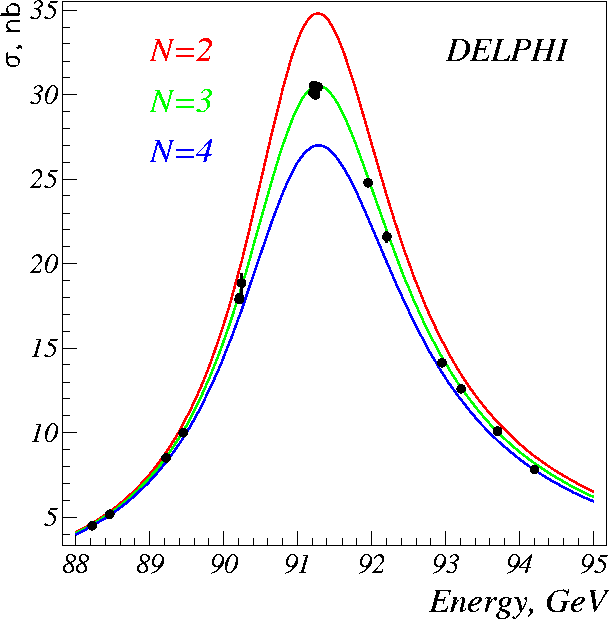| DELPHI experiment: setup and goals |
|
Introduction to the DELPHI experiment
Selected experimental results
->Z0 ->hadrons, and a theoretical fit to the data.
From leptonic events one has got the following leptonic partial widths, which confirms the lepton universality hypothesis:
The invisible partial width is a very important measurement. It is determined to be:
This width can be translated into a measure of the number of existing light neutral fermions (i.e. neutrinos), and the number comes out to be:
The fact that this number is consistent with three, leaves no room for any more families of fermions than the three we already know of. The results above are based on results from all four LEP collaborations. DELPHI has performed several independent measurements of the strong coupling. The results are: From analysis of event shape distributions pf hadronic final states:
From scaling violations in fragmentation functions:
From Z0 line shape:
From ratio of hadronic to leptonic
From b-quark decays:
The fact that these results are consistent indicates that
The top quark is
too heavy to be seen directly at the energy available at LEP. The top quark was discovered at Fermilab, the
mass is determined to be approximately 175 GeV.
The searches for the remaining
important ingredient of the Standard Model, i.e. the
higgs-particles, both neutral and charged, have been negative. The same is true
for searches for supersymetric particles. 1995, 1997 |
|
|
| ©1997 Particle Physics, Lund University | ||












 -decays:
-decays:


 is unique, and
independent of, for instance, quark-flavour. Other LEP-collaborations give similar
results.
is unique, and
independent of, for instance, quark-flavour. Other LEP-collaborations give similar
results.